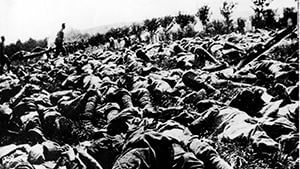Examining the history of the scaffold, Tomas Santos characterizes it as a place where the power of the King was brought about through “vengeance being wrought over the criminal.” Public executions were seen as “not only a judicial but also as a political ritual (Foucault).” Executions were carried out, Santos says, to show “both the power of the King and the truth of the crime.” Torture was meant for all to see: a grand spectacle giving witness to the King’s power—not just over the criminal, but over all those under the King’s rule. Criminals were considered enemies of the State, and torture functioned to defeat the King’s enemies. By making torture a public spectacle, the King or sovereign made it clear that “he and he alone rules the land.” Paul Kahn states (2008) that in modern times, the locus of the practice of torture and execution has shifted: from the scaffold to the battlefield. The battlefield, Kahn says, is strewn with the “disembodied and beheaded, with severed limbs and broken bodies.” All have died a terrible death in a “display of sovereign power.” To view the battlefield is to witness the “awesome power of the sovereign to occupy and destroy the finite body.” The purpose of torture and executions was to establish the power of the King. Victims were compelled to “speak the name of the sovereign.” The battlefield, Kahn says, exists in the same imaginative framework as the spectacle of the scaffold, a space for the “showing forth of the creative-destructive power of the sovereign.” Viewing a battlefield from a certain distance, it is not even clear who is the object of sacrifice: the enemy and the conscript both “suffer the same threat and burden of physical destruction” for the sake of “making present sovereign power.” In modern times, the sovereign is no longer a king or queen. Rather, the sovereign authority possessing supreme power is the nation. The nation-state is the sovereign power to which everyone must submit. War victims “speak the name of the nation.” Summing up his understanding of the First World War—based on a lifetime of research—Jay Winter (1996) concludes:
But, of course, the war did have a purpose: to compel young men to “speak the name of the sovereign”: to submit to the nation-state. The First World War was a monumental spectacle, bearing witness to the awesome power of nations to “occupy and destroy the finite body.” |
